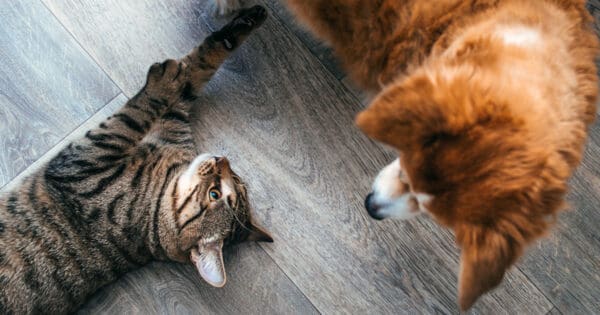
11401 NE 195th St. Bothell, WA 98011
(425) 486-9000 PHONE (425) 486-9002 fax
Notice: Below care sheet is from 2016, and may not reflect up-to-date care information.
Natural History
The red-eared slider (Trachemys scripta elegans) is a semi-aquatic turtle. It is the most popular pet turtle in the United States and much of the world. Their name comes from their red markings near their ears, and the fact that they are quite skilled at quickly sliding off shores and banks to retreat into the water. Males can grow to be 7-9”, while females can often be 12” in length.
Red-eared sliders are native to the southern United States and northern Mexico, but populations have become established in other places because of pet releases. Because of this, they are considered an invasive species in many areas, where they out-compete native species. The red-eared slider is included in the “List of The World’s 100 Most Invasive Species” published by the International Union for the Conservation of Nature.
Husbandry
Housing: The size of a red-eared slider’s cage should at the very least be large enough so that it can swim 3 or 4 body lengths before it has to turn around. Hatchlings can start out in 10- or 20-gallon long tanks, while adults will require much larger habitations – easily 60- to 125-gallon tanks. Hatchlings should be kept in a tank with approximately 6 inches of water, whereas adults should be given much deeper swimming areas. All red-eared sliders need easy access to solid “haul-out” areas, or basking spots, where they can climb out of the water and dry completely. These areas should be kept warm and provided with UVB lighting.
Heating: During the daytime, red-eared sliders should have a basking spot over a dry “haul-out” surface with air temperatures around 90°F. At night, the lights should be turned off, and air temperatures can safely drop to 70°F, but should not slip below this temperature. The water temperature should be maintained in the low to mid-70°F for adults, and in the high 70°F for hatchlings & smaller juveniles. Mercury vapor bulbs, which produce both necessary UV light and heat, are best used during the day, whereas ceramic heat emitters, which only produce heat and have no light, are excellent to use at night. A water heater should only be used if water temperatures are dropping below 70°F (see below).
Lighting: UV lighting is necessary for the health of all turtles, and it comes in two equally necessary forms. UVA rays are radiation waves that are needed to promote natural behaviors and stimulate appetite. UVB rays are the other type of radiation waves, necessary for the metabolism of calcium and bone health. A good way to tell the two UV rays apart is “A for appetite, B for bones.”
UVB is only provided in 2 different kinds of lights: florescent lights specifically designed for UVB output in reptiles, and mercury vapor bulbs. Some bulbs sold in pet stores are labeled as being “full spectrum,” and packaging may erroneously lead you to believe that a bulb that produces UVA only is enough for a turtle, but unless the box specifically states that it offers UVB lighting, it will not be what your pet needs. All UVB bulbs will provide UVA, but not all UVA bulbs will provide UVB.
Florescent bulbs for reptiles come in a few different styles, the most common being the coil and tubular strip varieties. Coil fluorescents have the shortest lifespan of all UVB bulbs, and even though they may continue to produce visible light for years, the UVB they provide will only last about 3-4 months. Strip fluorescents are similar, but can last 4-6 months. Mercury vapor bulbs are among the longest lasting UVB sources on the market (with the potential to produce UVB for up to a year); these bulbs also produce heat. All bulbs should be replaced every 4-6 months, unless their output is being routinely measured with a UVB meter to ensure that they are producing adequate spectrum of lighting.
It is important to allow the turtle to get within 12 inches of any UVB light source you do provide, as the distance of the light can greatly affect the amount of UVB absorbed.
Regardless of what artificial light you provide, nothing beats the power of the sun. Supervised outdoor time during warm, summer days will benefit your turtle tremendously.
Water Quality Maintenance: It is very important to buy the highest rated canister water filter you can afford, as water quality plays a vital role in the health of your pet turtle. Purchasing filters that are designed to handle tanks twice the size of your turtle’s enclosure, and/or purchasing two filters instead of one, is essential. Aquatic turtles excrete copious amounts of ammonia in their stools, and as a result, a powerful biological filter of beneficial bacteria is also needed to convert ammonia into less harmful nitrites and nitrates. These bacteria live on the surface of the gravel and furniture within the tank, so it is important not to scrub these structures clean, as this will disrupt/kill the bacteria growing there. A 25% water change once a week or a 50-75% water change every 2-3 weeks is necessary. Aquarium gravel vacuums are highly recommended for these water changes, as these tools are designed to suck up water and debris from the floor of the tank where waste accumulates the most. The water should be dechlorinated with an over the counter product prior to adding it to the tank.
Water testing should be done periodically to keep track of the pH, ammonia, nitrite, and nitrate levels. A pH of 6.0-8.0 is best for red-eared sliders, while ammonia, nitrite, and nitrate should all be at or very close to 0. Water testing kits can be purchased at any store that sells fish supplies; “liquid kits” such as API Freshwater Master Test Kit are more reliable/accurate than “card/strip kits.”
Diet
Red-eared sliders are classified as omnivores – starting out as mainly carnivorous and then progressing into primarily herbivorous adults. Their enthusiasm to devour higher protein foods makes it easy for keepers to feed them too much of it, but an imbalance of protein in the diet can cause abnormally rapid growth, pyramiding shells, and liver or kidney damage.
It is recommended that you feed in a separate container. This not only greatly helps with maintaining water quality, but it also allows you to be gauge how much your turtle is eating and, in some cases, if they are eating at all. It can also allow you to see if your turtle is passing waste properly, as most times they will use the bathroom in this feeding container. This also makes for easy clean up. A feeding container should be large enough for the turtle to comfortably move around in and the water depth only needs to be deep enough to cover the top of the shell. Feed hatchlings daily. Turtles older than 1 year can be fed twice weekly. Give all turtles 15-20 minutes to eat as much as they can before removing them from the feeding container.
Turtles under 1 year can subsist on a combination of commercial pelleted diets and animal protein, with vegetables offered as garnish, but adults should follow the guidelines below:
- Commercial pelleted diets: this should make up approximately 60-70% of the diet. The quality of commercial diets is very important. Recommended brands of pellets include Mazuri, ReptoMin, and ZooMed.
- Vegetables: This should make up approximately 20-30% of the diet. Choose as wide a variety as possible when making food for your pet. Collard greens, mustard greens, dandelion greens, watercress, broccoli, escarole, Swiss chard, parsley, kale, spinach, romaine, carrot and beet tops, water hyacinth, water lettuce, and duckweed are all excellent choices. Avoid pale greens such as iceberg lettuce or celery tops. Vary the veggies used.
- Animal protein: This should make up no more than 10% of the diet. Mealworms, waxworms, tubifex worms, bloodworms, earthworms, finely chopped/cooked lean beef or beef heart, cooked chicken, cooked salmon, crayfish, mosquito larvae, and live feeder fish are good choices. Vary the items used.
- Fruit: This should make up no more than 5% of the diet, and should only be used as a rare treat. Apples, melons, bananas, berries, grapes, plums, peaches, and tomatoes are all acceptable.
- Calcium: Captive turtles require additional calcium supplementation. Calcium powder is manufactured by many different brands on the market (Fluker’s, Exo-Terra, Rep-Cal, etc); whatever brand you choose, select a product that does not contain phosphorous or vitamin D3. It should be sprinkled onto the food once daily for turtles less than 1 year old, and 2-3 times weekly for adults. For aquatic feeders, moisten the food first, place it into a plastic bag with some calcium supplement powder, and shake it up. The calcium will stick to the moist food. Let the then-coated food dry. This will help it stay together and prevent dispersal when you drop it into the water.
- Multivitamin: Vitamins are also important to promote healthy body function. There are many brands that make multivitamins appropriate for reptiles (Herptivite, Reptivite, Vionate, etc). Vitamins (especially fat soluble vitamins such as A and D) are easy to overdose, and too much vitamin supplementation can actually be harmful. As a general rule, a reptile multivitamin supplement should be sprinkled on the food only once every one to two weeks.
Handling
You should always wash your hands before and after any kind of physical contact with your turtle. As a general rule, you should try to only handle your turtle when absolutely necessary, such as when taking him to the vet or moving him to a new enclosure. While some red-eared slider don’t seem to mind being picked up and handled, it is generally safer for your pet to be kept in his cage. Red-eared sliders may bite or scratch when being picked up, so use caution.
Common Medical Issues
Salmonella: Salmonella is a genus of bacteria that is found naturally in the gut flora of both warm- and cold-blooded animals, as well as in the environment. It does not make turtles sick, but it can cause salmonella poisoning (salmonellosis) in humans. Children and the immunosuppressed are at highest risk for contracting salmonellosis, but the key factors involved in preventing this illness are very straight forward: cage cleanliness and personal hygiene. Ensuring that your turtle’s habitat is sanitary and free of fecal material or food waste helps prevent salmonella from becoming a problem. Salmonella is not specific to turtles, nor are turtles its greatest vector, but you should always wash your hands after handling any turtles. By following these precautions, the risk of getting salmonellosis from your turtle will be very low.
Vitamin A Deficiency: This deficiency is a common problem in pet turtles, and it is caused by inadequate vitamin intake. The body requires vitamin A to form healthy skin, mucous membranes, and ducts within organs such as the kidneys and salivary glands. When vitamin A is insufficient in the body, it disrupts the normal function of skin or organs, manifesting itself in symptoms such as swollen eyes or mouth infection. Turtles experiencing these symptoms should be seen by a reptile veterinarian, and husbandry changes will need to be made.
Shell Rot: This is a term used to describe a number of various fungal or bacterial infections that can affect a turtle’s shell. It typically begins when the turtle’s shell is damaged by a scratch or a crack. This wound leaves room for bacteria or fungi to invade. The subsequent infection will grow, and can eat away at the shell, creating holes and discolorations, until it will eventually rot through the bone and into the body cavity if left untreated. A spotless tank is the best preventative measure, but once shell rot has begun, your turtle will need to be seen by a reptile veterinarian right away.
Septicemia: Septicemia, or blood poisoning, is a condition where there is a bacterial presence in the blood. Previous illness, infection, injury or improper habitat may be an indirect cause of septicemia. Symptoms that may be present are pinkish or reddish coloring on skin or shell, lesions, sores, lethargy, withdrawn behavior, unresponsiveness, swelling flesh, eyes, or limbs, and lack of urine. Septicemia is a serious and life-threatening infection that requires immediate emergency care. Only qualified medical care can assist this condition.
Respiratory Infection: This is a common and deadly illness that affects many captive turtles. It can be contagious to other turtles, and requires medical attention. Improper basking, water, or ambient temperatures greatly increases the chances of contracting a respiratory infection, but respiratory problems can be a symptom of vitamin A deficiency or other underlying issues. Most obvious symptoms of respiratory infection are listing (swimming unusually), sneezing, coughing, exhibiting nasal or oral discharge, and open mouthed breathing. Should you notice these behaviors in your turtle, a qualified reptile veterinarian should be consulted immediately.
March 30, 2015
Content of this Care Sheet Courtesy of:
The Center for Bird and Exotic Animal Medicine
11401 NE 195th St. Bothell, WA 98011
(425) 486-9000 PHONE (425) 486-9002 fax



